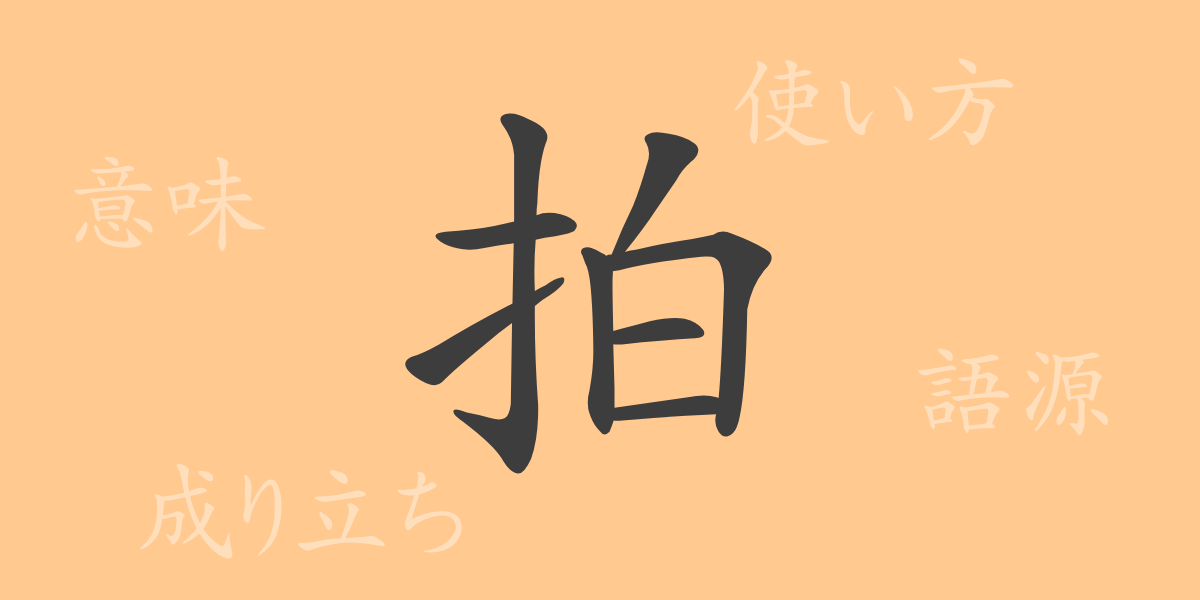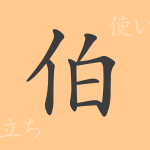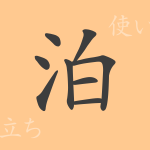The richness of Japanese written culture lies in its many kanji, each carrying its own unique story. The kanji “拍 (はく, haku)” is no exception. In this article, we delve into the world of “拍,” exploring its origins, meanings, usage, and even idioms and phrases that feature this fascinating character. While “拍” is a kanji frequently seen in daily life, understanding the history and cultural context behind it can deepen our appreciation of the language.
The Origins of 拍 (はく, haku)
The kanji “拍” combines the radical for hand “手 (て, te)” on the left with “白 (はく, haku),” which represents sound in this context. While “白” typically means white or bright, here it is used to symbolize sound. Together, these elements signify the sound produced by a hand movement, such as clapping. Thus, “拍” came to represent rhythm or sound created by hand actions.
Meanings and Usage of 拍 (はく, haku)
“拍” primarily denotes rhythm or beat, often used as a unit of measure in music. For instance, “四拍子 (しびょうし, shibyoushi)” refers to a four-beat rhythm. Figuratively, it can describe the rhythm or pace of events, as in the expression, “彼の話は拍を失うことがない (かれのはなしははくをうしなうことがない, kare no hanashi wa haku o ushinau koto ga nai),” meaning “His story never loses its rhythm.”
Reading, Stroke Count, and Radical of 拍 (はく, haku)
The kanji “拍” has specific readings and components in Japanese.
- Readings: The on’yomi (音読み, Chinese reading) is “ハク (はく, haku),” and the kun’yomi (訓読み, Japanese reading) is “う(つ) (utsu)” meaning “to hit or clap.”
- Stroke count: “拍” consists of 8 strokes.
- Radical: The radical is “手 (て, te),” also known as “扌 (てへん, tehen),” which relates to hand actions.
Idioms, Phrases, and Proverbs Using 拍 (はく, haku)
There are various idioms, phrases, and proverbs that incorporate the kanji “拍.” Here are some examples:
- 「拍手喝采 (はくしゅかっさい, hakushu kassai)」 – Clapping and cheering enthusiastically.
- 「拍子抜け (ひょうしぬけ, hyoushinuke)」 – Feeling let down or anticlimactic when expectations are not met.
- 「一拍置いて (いっぱくおいて, ippaku oite)」 – Taking a brief pause before taking action.
- 「拍車をかける (はくしゃをかける, hakusha o kakeru)」 – To spur on or accelerate progress.
Conclusion on 拍 (はく, haku)
The kanji “拍” is a character used to represent concepts of rhythm, tempo, and progression, applicable not only in music but also in various aspects of daily life. Understanding its origins and meanings can enhance our grasp of the language, enabling richer expression. Through this exploration, we have glimpsed the multifaceted nature of “拍.” Learning about the cultural and historical contexts behind each character enriches our use of language and deepens our connection to it.

























